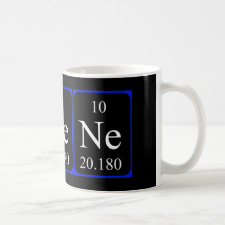
Authors: Pereira E, Cáceres C, Rivera F, Rivas B, Sáez P
Article Title: Preparation of molecularly imprinted polymers for diphenylamine removal from organic gunshot residues.
Publication date: 2014
Journal: Journal of the Chilean Chemical Society
Volume: 59
Issue: (4)
Page numbers: 2731-2736.
DOI: 10.4067/S0717-97072014000400021
Alternative URL: http://www.scielo.cl/scielo.php?pid=S0717-97072014000400021&script=sci_arttext
Abstract: In order to obtain a better tool for collecting forensic evidence at the crime scene and the subsequent analysis of gunshot residue in laboratories, we propose the development of Molecularly Imprinted Polymers (MIPs) for the retention of diphenylamine (DPA), an organic compound coming from gunshot residues. This technique aims to achieve molecular recognition of a particular organic molecule, called target molecule. Once occurred recognition, this organic molecule may be removed, separated, and preconcentrated for further analysis.
For this, a series of MIPs and their analogs Non Molecularly Imprinted Polymers (NIPs) following a non-covalent strategy was synthesized. This was carried out by solution radical polymerization, using 1-vinyl-2-pyrrolidone (VP) as monomer, and diphenylamine as imprinting and target molecule. The retention capacity of MIPs was studied by HPLC and UV-VIS spectroscopy, meanwhile adsorption mechanism was studied by isothermal and kinetic assays. Resin yields ranged from 25% to 100%. The results show that the variable that has more influence on DPA retention is the amount of crosslinking, wherein a greater amount of crosslinking results in higher retention of DPA, achieving values up to 90%. There is a clear difference in adsorption capacity between MIPs and NIPs, where MIPs show higher adsorption capacity reaching a double or triple retention value. Kinetic studies show that it is achieved a high retention capacity within 5 min of contact. The results show that the fundamental mechanism for molecular recognition displayed by the imprinting effect can be attributed at two processes: the pre-organization of complementary functional groups present in the polymer and the template and selective cavity formation which complement the template size. Binding factors and selectivity combined effects contributing to molecular recognition of diphenylamine (DPA) by MIPs.
Template and target information: diphenylamine, DPA



Join the Society for Molecular Imprinting

New items RSS feed
Sign-up for e-mail updates:
Choose between receiving an occasional newsletter or more frequent e-mail alerts.
Click here to go to the sign-up page.
Is your name elemental or peptidic? Enter your name and find out by clicking either of the buttons below!
Other products you may like:
 MIPdatabase
MIPdatabase









